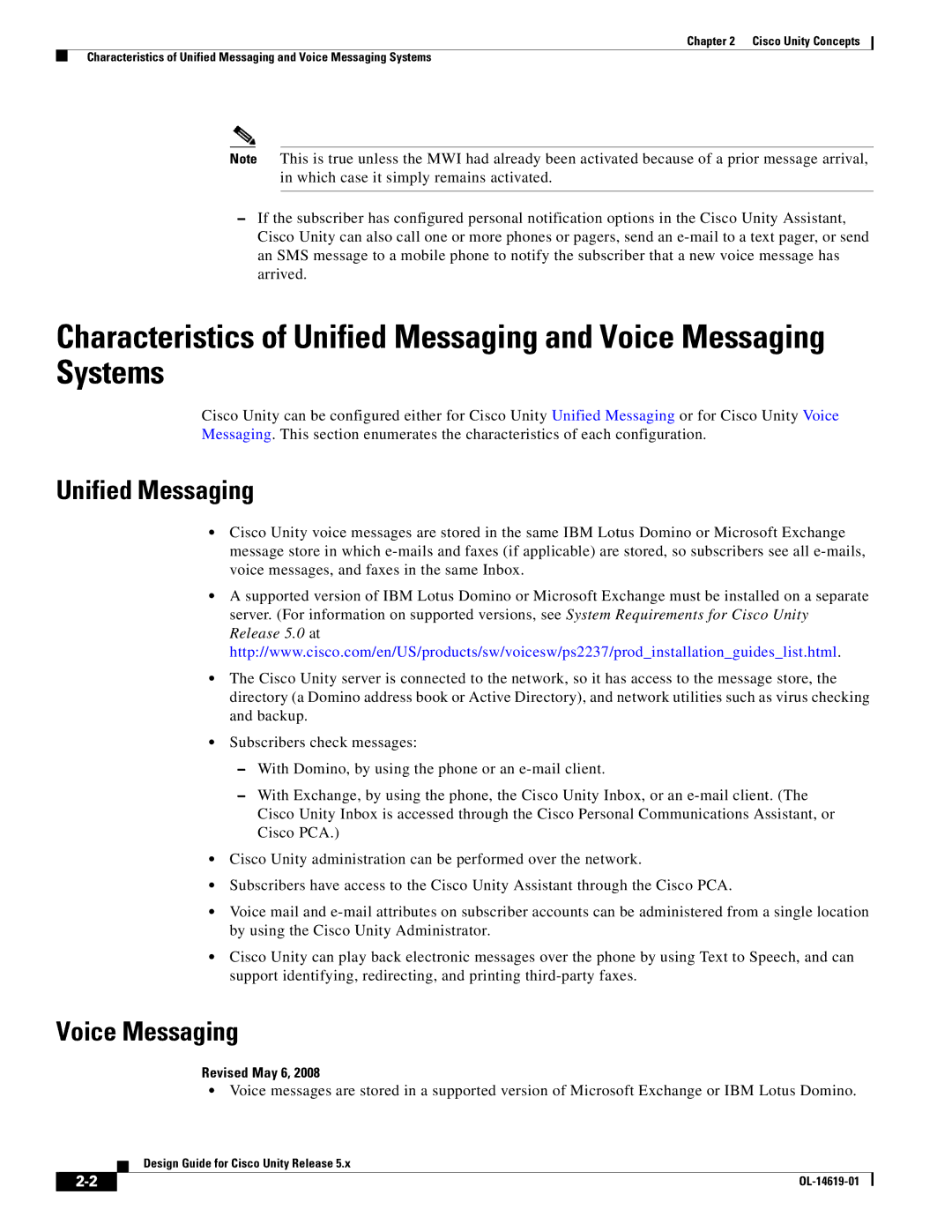
Chapter 2 Cisco Unity Concepts
Characteristics of Unified Messaging and Voice Messaging Systems
Note This is true unless the MWI had already been activated because of a prior message arrival, in which case it simply remains activated.
–If the subscriber has configured personal notification options in the Cisco Unity Assistant, Cisco Unity can also call one or more phones or pagers, send an
Characteristics of Unified Messaging and Voice Messaging Systems
Cisco Unity can be configured either for Cisco Unity Unified Messaging or for Cisco Unity Voice Messaging. This section enumerates the characteristics of each configuration.
Unified Messaging
•Cisco Unity voice messages are stored in the same IBM Lotus Domino or Microsoft Exchange message store in which
•A supported version of IBM Lotus Domino or Microsoft Exchange must be installed on a separate server. (For information on supported versions, see System Requirements for Cisco Unity Release 5.0 at http://www.cisco.com/en/US/products/sw/voicesw/ps2237/prod_installation_guides_list.html.
•The Cisco Unity server is connected to the network, so it has access to the message store, the directory (a Domino address book or Active Directory), and network utilities such as virus checking and backup.
•Subscribers check messages:
–With Domino, by using the phone or an
–With Exchange, by using the phone, the Cisco Unity Inbox, or an
•Cisco Unity administration can be performed over the network.
•Subscribers have access to the Cisco Unity Assistant through the Cisco PCA.
•Voice mail and
•Cisco Unity can play back electronic messages over the phone by using Text to Speech, and can support identifying, redirecting, and printing
Voice Messaging
Revised May 6, 2008
•Voice messages are stored in a supported version of Microsoft Exchange or IBM Lotus Domino.
Design Guide for Cisco Unity Release 5.x
| ||
|
